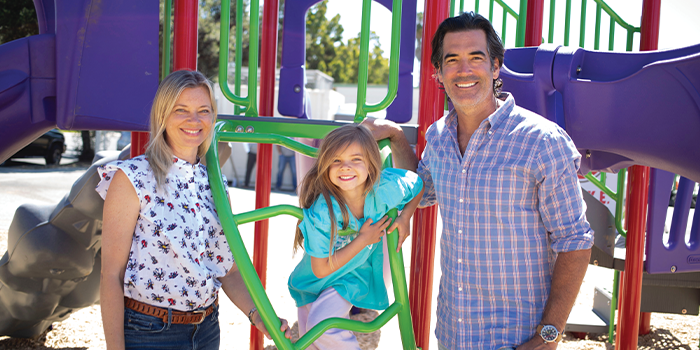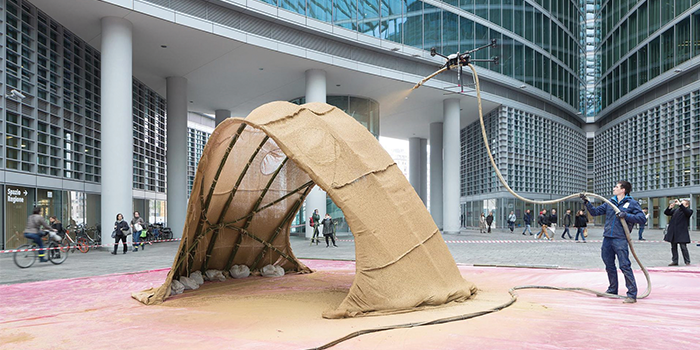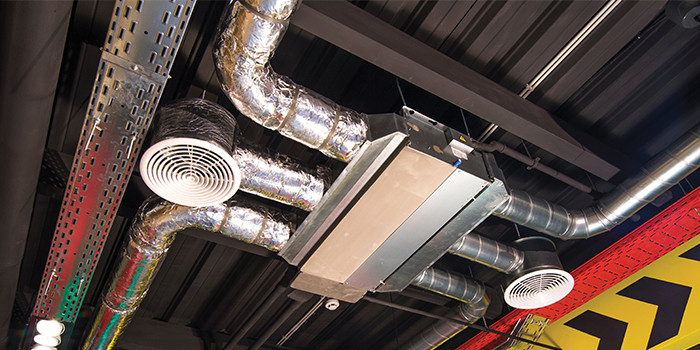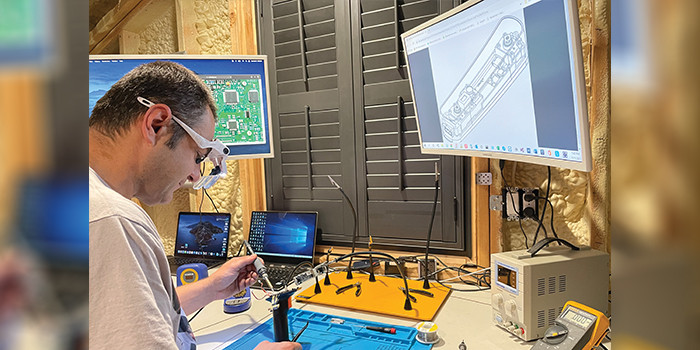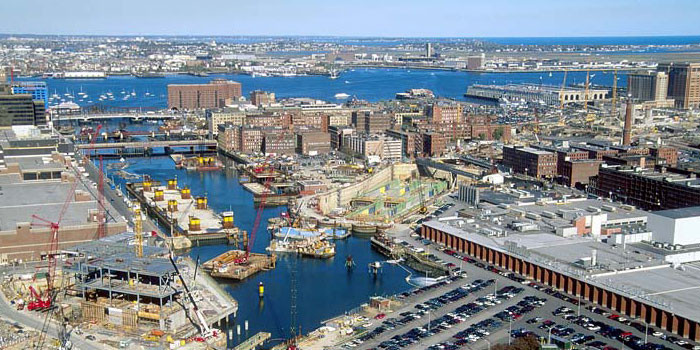
The Big Dig

Summer 2020 – Spray Foam Magazine – Commonly referred to as the “Big Dig,” the Spray Foam Magazine team investigates the project that cost billions and took years to complete. The objective of this mammoth development was to solve the historic city of Boston’s congestion problems by rerouting its traffic. This involved a seven-mile highway being built under the skyscrapers, railroads, the harbor, and the city’s subway system. The initial concept was launched in 1983 and ground was eventually broken in 1991, taking 20 years to complete. It has been viewed as the largest civil engineering project in U.S. history, producing some amazing engineering spectacles which involved the use of some innovative materials like spray foam insulation.
The Spray Foam Magazine team investigated how SPF was used at the South Station railroad yard as part of the extension of the Mass Pike under this transit station and under the Boston harbor on its way to Logan airport. At the time, Henri Fennell’s Building Envelope Solution’s FOAM-TECH DIVISION was hired to carry out the spray foam work with a crew varying from two to six members throughout the duration of the spray foam part of the “Fort Point Channel I-90 tunnel crossing” project. Intermittently, taking just over a year and a half, the crew sprayed a total area of 10,000 square feet with a four-inch to a 60-inch thickness of closed-cell spray foam, and with some areas being sprayed twice due to the excavation work damaging the foam that had been installed in previous mobilizations.
The excavation utilized the frozen-earth retaining technology where an 80-foot to 100-foot deep vertical cut had to be made to form a deep trench that was within a few feet of the South Station railroad tracks. This method used -20 degree C salt brine that was circulated in 100-foot deep wells to freeze the ground. This stabilized the soil where the new interstate precast sections were being jacked underneath the railroad yard while the trains and other traffic continued to operate on the surface. Once the ground had been frozen and the excavation started, it was then time for the spray foam crew to commence with their work. Their role was to insulate the newly exposed face of the cut earth so it would stay frozen. When asked what it was like to work so close to the cutting edge Fennell stated, “We could feel the vibrations of the massive engines and train cars passing just above us as we sprayed foam, trusting that the engineers designing the project were right about the frozen earth not caving in on top of us.”
Because of the extreme cold substrate conditions, FOAM-TECH used Demilec B200-4 foam, a two-component, closed-cell, spray-applied, rigid polyurethane foam system specially formulated for cold applications. This foam system had been used for the Alaskan Pipeline and was well suited for this frozen-earth application. Graco and Gusmer proportioners were used for the foam installation.
The first challenge for Fennell was that the Big Dig was a union project, and FOAM-TECH was not a union shop. The union only allowed FOAM-TECH to spray foam there after they verified that there were no available union trades that had the correct equipment and trained personnel to do this specialized SPF work.
Next, because there was no framing or other means of supporting any other type of insulation material, fiberglass and cellulose were not acceptable options. The desired material had to provide excellent insulation, be self-supporting, and weather tolerant for an extended period of time. This resulted in the engineers on the project specifying four inches of closed-cell spray foam insulation to prevent thawing of the earth once the excavation exposed it.
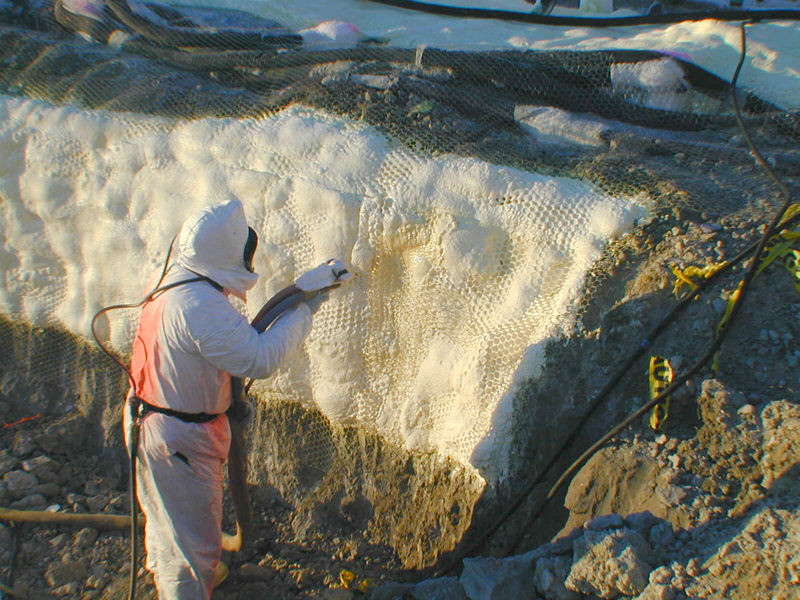
In just over a year and half, a total area of 10,000 square feet was sprayed with closed-cell spray foam.
When requested to bid the work, Fennell required that chicken wire be attached to the face of the frozen earth to guarantee that the SPF would stay in place during the few minutes that the exothermic heat of the chemical reaction softened a thin layer of the frozen soil’s surface, or when environmental conditions required that the installation occur at times when the substrate was wet. Therefore, once the vertical frozen soil was excavated, the union workers immediately prepared the frozen surface by nailing chicken wire to it.
Because the conditions at the Big Dig were different than at the Alaskan Pipeline, Fennell worked with the manufacturer to verify the best processing requirements for the foam in this situation. The consistently cold substrate that didn’t warm up despite the exotherm or isolation from cold outdoor air after being insulated, meant that a new pass thickness and dwell time needed to be determined. Tests were performed on site at the manufacturer’s direction to create a standard for these installation parameters. It was determined using core temperature monitoring that much thicker than normal passes were possible without risking burn out, and that shorter dwell times were acceptable for these sub-freezing substrate conditions. Based on this testing, core temperatures were checked routinely as seasonal conditions varied, and pass thickness and dwell time were adjusted accordingly.
Because the integrity of the shoring system was so critical to the operations in South Station and to the completion of the Turnpike Extension, it was imperative that any newly exposed frozen earth be insulated immediately. The engineers were concerned that any thawing of the soils could result in the collapse of the embankment, and even having a train fall into the “pit.”
This meant that the foam had to be installed within a specified number of hours after the excavation. In some cases, the crew installed foam during rain and snow to avoid thawing of the substrate, knowing the wet substrate could temporarily reduce adhesion. The chicken wire and mechanical fastening system was designed to hold the foam up during these limited periods of time, until the wet and/or melted surface could refreeze and become solid behind the foam. Fennell did testing in small areas to determine how long it took to refreeze using probe thermometers to measure and document the temperature behind the foam.
The site was an area of Boston that had originally been a salt marsh which had been filled over the years to increase the amount of usable waterfront property. When the FOAM-TECH crew first arrived to spray the newly exposed frozen embankment, there was supposed to be a “smooth” substrate (plus or minus two inches), but the ground being excavated was all fill that was full of construction debris, old docks, junk cars, cobble stones, etc. Whenever the excavation crew worked, large chunks often broke off of the frozen surface and thus created a very irregular surface to spray against. The engineers required that any irregular surface areas had to be filled with foam out to the intended plane of the excavation and foam insulation. For example, if a junk car broke out of the frozen ground during the excavation, the void had to be filled with SPF out to the project’s specified insulation plane, no matter how thick the foam had to be. This inevitably required much more foam than the originally intended four-inch thickness and the project went over budget. In fact, the original estimate of eight and a half sets increased to 20 (20,000 pounds) due to the application thickness being as high as 60 inches in some places.
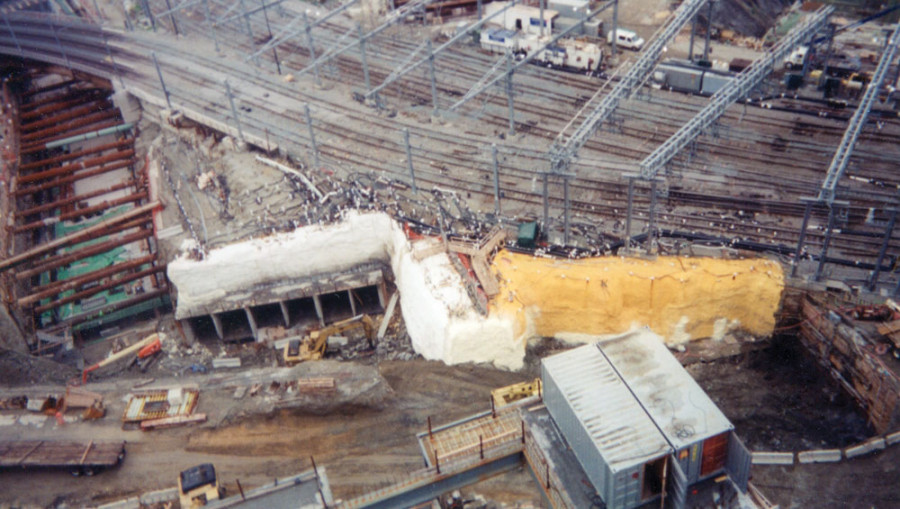
The project required frozen-earth retaining technology so that the soil was stabilized. The spray foam team was then tasked to insulate the newly exposed face of the cut earth so that it would remain frozen.
Fortunately for BES, because the general contractor couldn’t maintain a consistent substrate plane to spray onto, the contract became cost-plus. Because this kind of unforeseen condition was a common occurrence for the Big Dig project, the general contractor had severe cash flow issues, causing Fennell to have to finance the work for short periods in order to meet the project’s critical scheduling requirements.
Fennell’s crews faced other obstacles during the project, but due to the crews’ initiative, they managed to complete the job and work their way through the issues. For example, no coating was originally specified on the foam because it was outside. However, when the I-90 interstate castings started to break through the face of the excavation and the foam, iron workers used torches to cut off the rebar, causing a fire. Luckily, there was no damage, and after this event intumescent paint was installed.
Often, the crews were given little advance notice regarding when they would be needed on site, and given the need to immediately insulate any newly exposed excavation, this led to stressful scheduling difficulties. Fennell remembers, “We were also unable to store inventory due to the client’s cash flow limitations and frequently had to make sudden trips to Montreal to pick up material and then drive immediately to Boston to install it. Winter work required heating the material ‘on the fly’ while driving to the site in these unscheduled events. Fortunately, we had equipment in our truck that could heat the drums while on the road.”
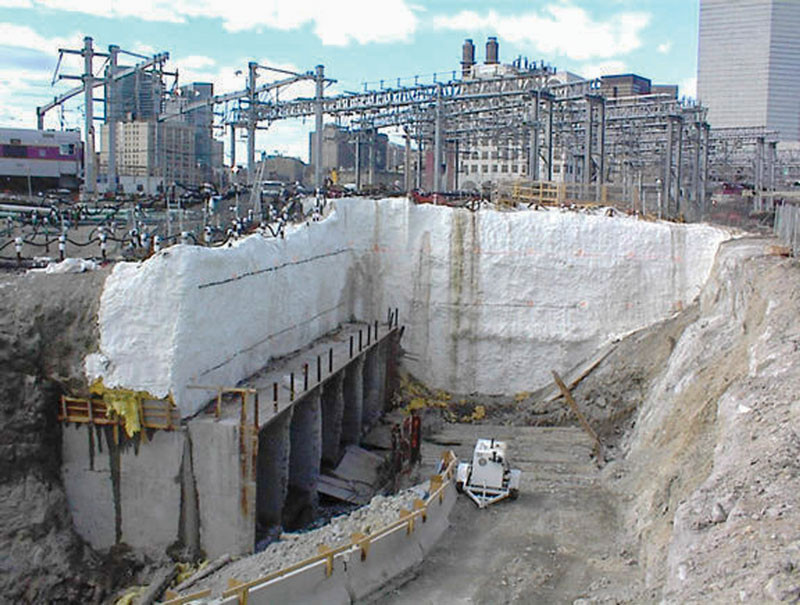
Another challenge they nearly faced was the flooding of the ocean into the pit in which the crew had been working. This was caused by the collapse of the other embankment, the one between the pit and the Fort Point Channel. FOAM-TECH crews were not on site that day, but the flooding resulted in the excavation and spray work being delayed, while the breach was repaired and the water was pumped out.
Throughout the project, the crews had daily toolbox safety talks on site. They wore complete Tyvek suits, gloves, and respirators with supplied air for most of their work. There was typically an eight to ten foot height per level of excavation, with the crew needing to use short ladders as the excavation progressed. However, in areas where the foam had been damaged above these heights, they used extension ladders and/or man lifts with appropriate fall protection equipment.
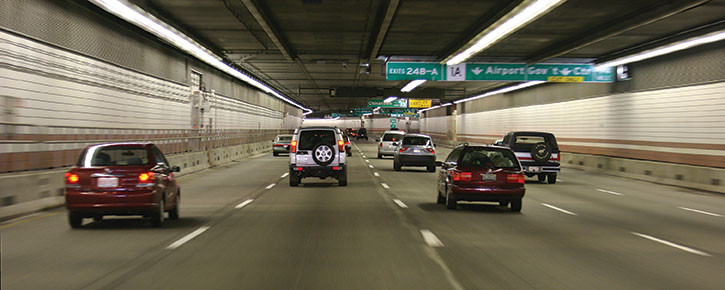
As a result of the megaproject, the Interstate 93 tunnel was extended to help combat traffic congestion.
Photo by Rene Schwietzke, FlickrNo portion of the 80- to 100-foot vertical cut in unstable fill material ever collapsed due to problems with the frozen-earth cooling system performance and/or the insulation the crew provided. A testament to this success was the results of the quality assurance protocol tests. The Engineers had required BES to measure and report the amount of effluent (an outflowing of melt water) draining out from behind the SPF at the bottom of the excavation as an indication of how much the frozen earth was melting. The engineers may have observed this on other frozen-earth retaining system projects, but no effluent was ever observed at the Big Dig.
So, despite the duration of the project, having to work in all seasons and battling through extreme weather like snow, sleet, wind, and rain followed by an extremely hot summer, the BES crews were proud to have worked on this cutting edge, record-setting frozen-earth retaining project. This was the largest ever frozen-earth retaining system application, even surpassing the previous “Chunnel” (English channel crossing) project.

